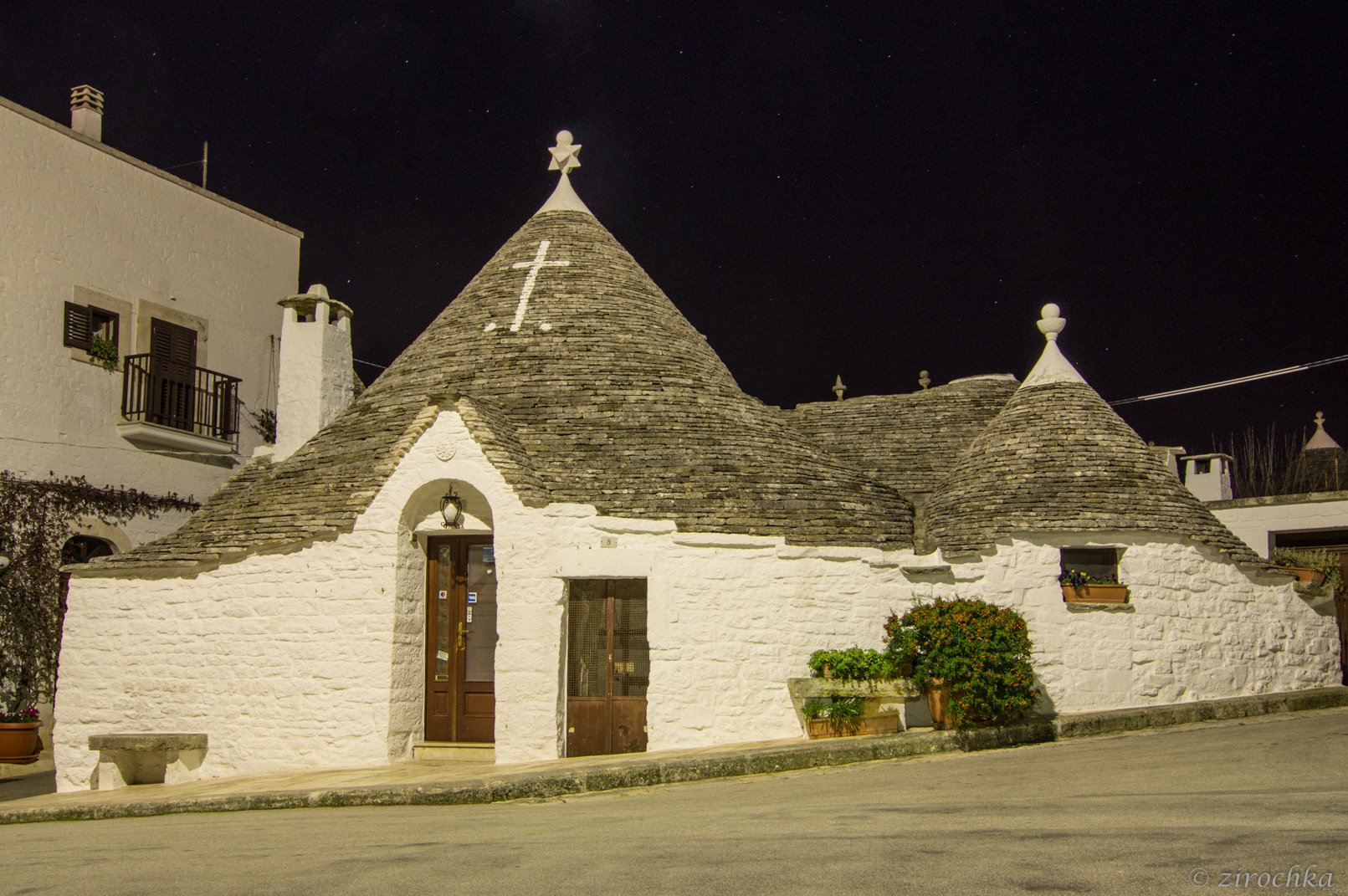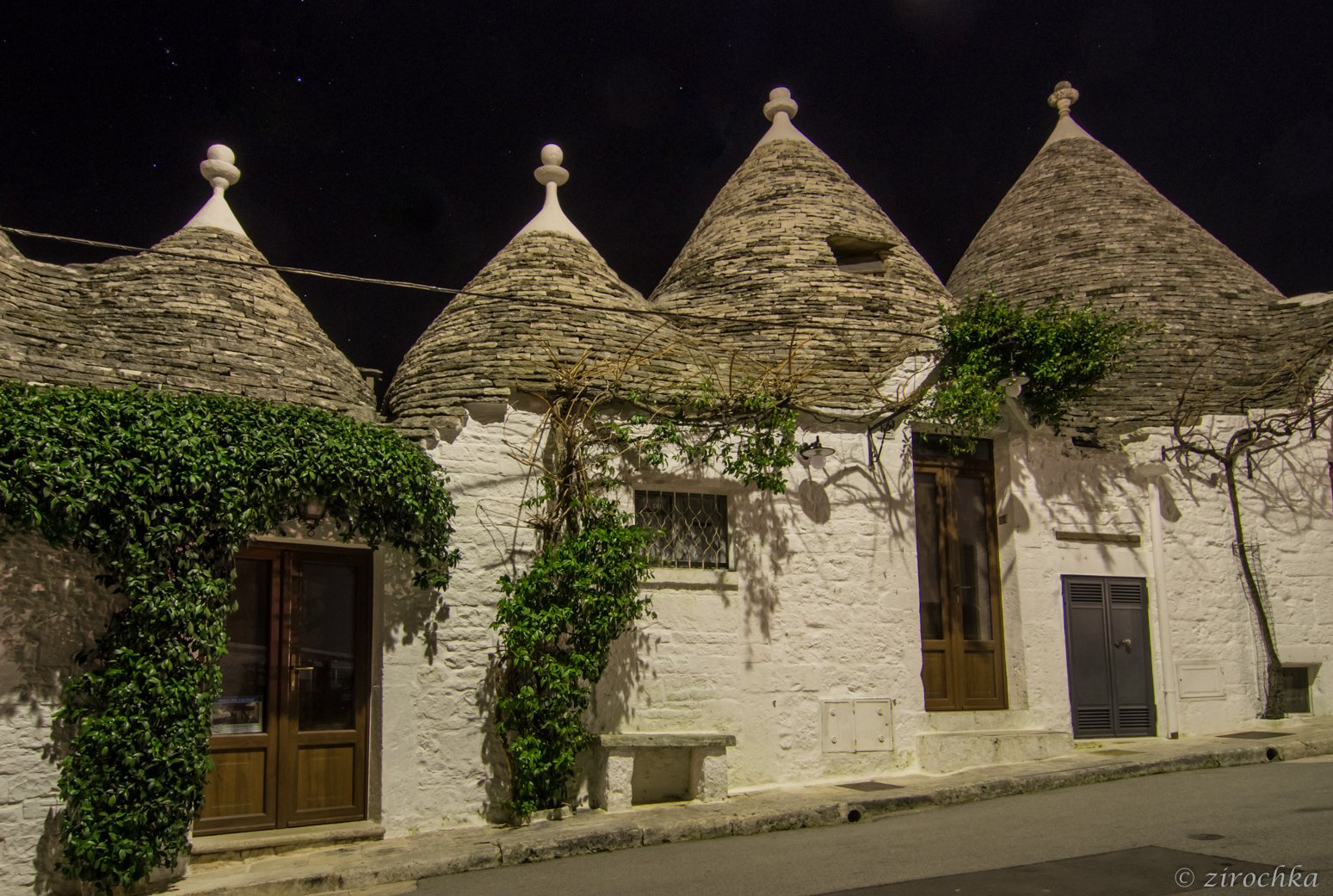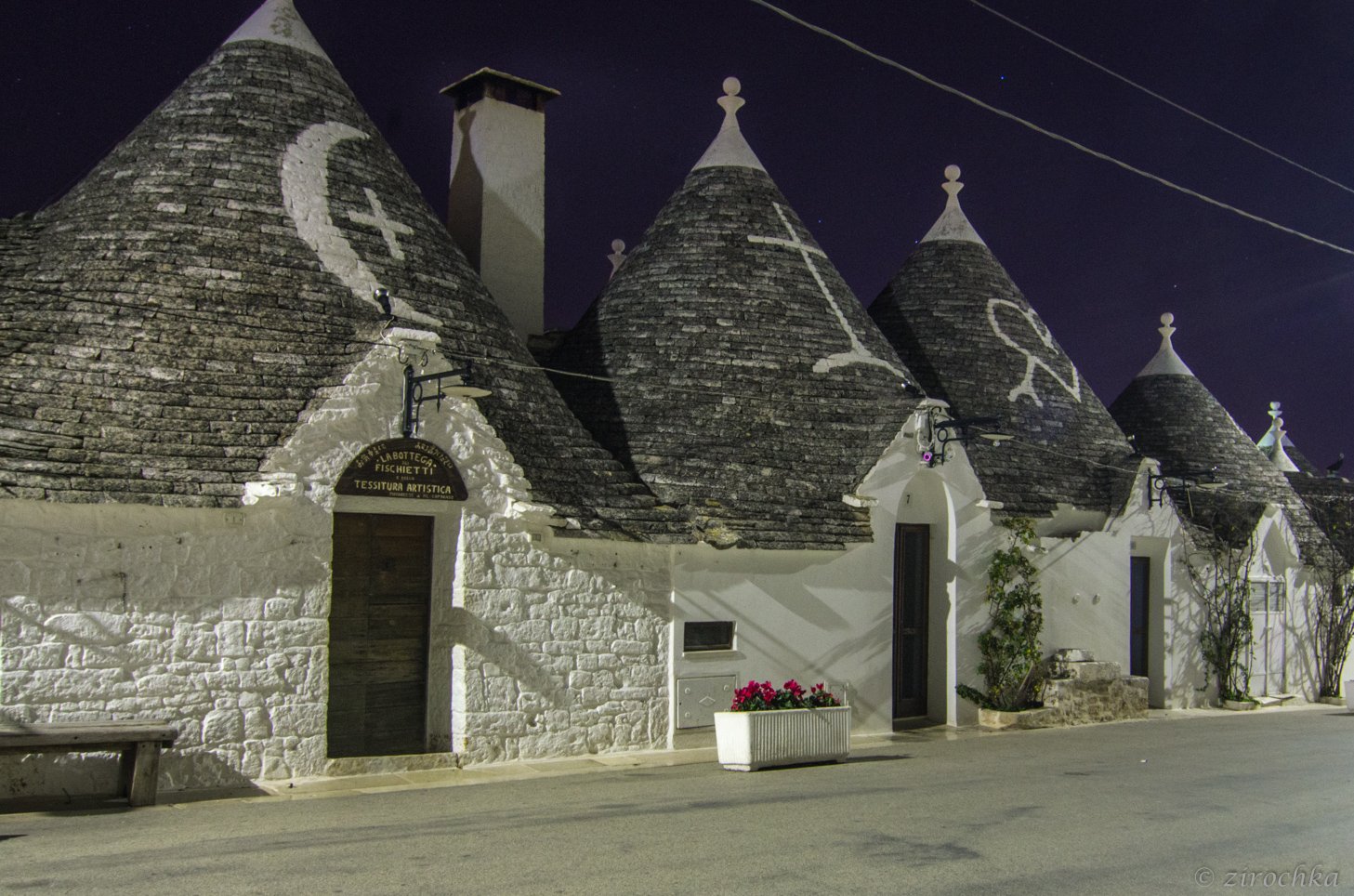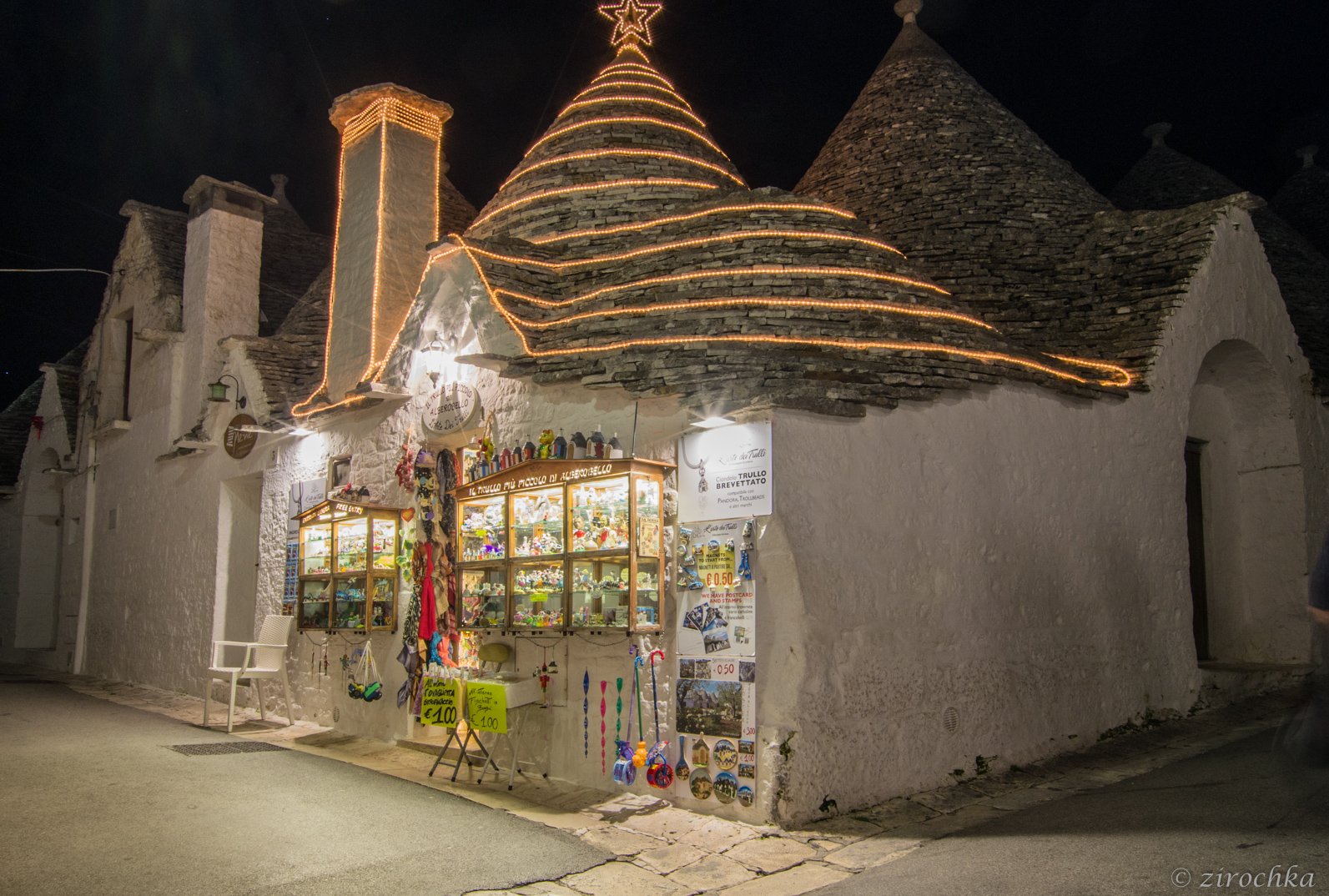| En | Ua |
|---|
| Hello, my dear readers! | Привіт, дорогі читачі мого блогу! |
| My today's short illustrated story is about extraordinary construction that you've seen if you read my earlier post Italian vacations: Alberobello, part #1 about trip to Apulia (Italian: Puglia) this winter. I was too excited about the scene, so I've made tons of photographs and finally getting around to sort them. | Моя сьогоднішня ілюстрована розповідь буде про незвичайні будівлі, які ви бачили у моєму попередньому пості Italian vacations: Alberobello, part #1 про нашу подорож до Апулії (італійською Пулія) цієї зими. Я була така схвильована побаченим, що зробила сотні фото, і тепер нарешті дійшли руки їх розгребсти. |

Trullo | Труло |
|---|
| What really intrigued me, was that I've read that trullo can be destroyed in a moment by getting out a one "main" stone. I couldn't find any confirmation of that (think it's just a touristic legend). But let's get back to facts. | Мене заінтригувала розповідь, яку я десь прочитала: якщо витягнути з будівлі певний камінь, то вона просто розсиплеться і перетворится на купу каміння. Підтвердження цьому я ніде не знайшла. Тому повернемось до фактів. |

| |
|---|
| As many other modern names, this word has Greek roots. Greek word for dome is τρούλος. Thus, trullo (or trulli in plural) is an stone house with conical roofs, constructed with the abundant limestone from the Apulia’s region. | Як і багато інших сучасних назв, це слово має грецьке коріння. Грецькою "купол" буде τρούλος. Отще, труло (у множині труллі) - це кам'яний будинок із конічним дахом, збудований із вапняку, якого багато в регіоні Апулія. |
| Trullo is dry-wall construction, made without mortar. The first trulli settlements date as far back as the Bronze Age. | Труло будували із каменю без використання розчину. Перші будинки-труло датуються Бронзовим Віком. |

| |
|---|
| Legend has it that this fancy houses has become very popular in the 15th Century because of high taxes on every new urban construction. Indeed, these types of settlements came to be identified as temporary and unstable, therefore not taxable. | За легендою, ці чудернацькі будиночки набули поширення в 15 століллі, коли були високі податки на побудову нових житлових будівель. Справді, цей тип житла був визнаний як тимчасовий і нестійкий, а отже не оподатковувався. |
| The trulli still extant today go back to c. 1350. Interesting thing is that old destroyed building weren't repaired but reconstructed. Despite of their unstableness, the compact structure without any elements of support or linkage, remains marvelously durable and, although seemingly so, primitive they are not. | Найстаріші трулі, які стоять і зараз, збудовані у 1350. Цікаво те, що при пошкодженні вони не підлягали ремонту, їх просто перебудовували. Незважаючи на їхню тимчасовість і примітивність, ці компактні будиночки без жодних підпор чи підвісів, залишаються на диво довговічними. |

| |
|---|
| I do not want to bore you with long story. I hope you enjoyed it! | Але я не хочу втомлювати Вас довгоими історіями. Сподіваюсь, Вам було цікаво! |

Thank you
For your time to read and view this post, your upvotes and comments. And resteem is always a pleasant bonus!
To be continue,
🌟
@zirochka
Unless stated otherwise all photos used in my posts are taken and owned by myself. If you wish to use any of them please contact me.







